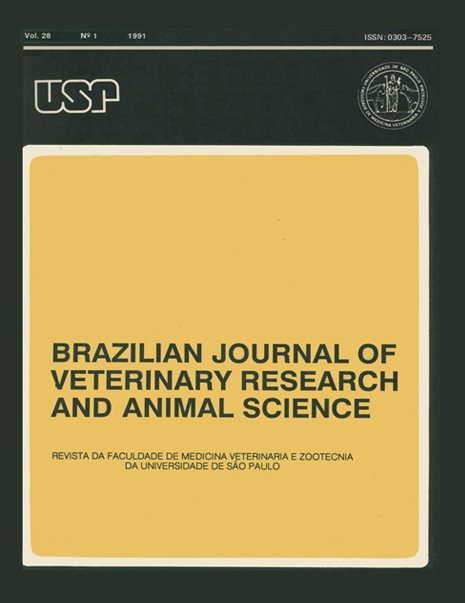Holstein and Simmental fresh embryos transfer efficacy
DOI:
https://doi.org/10.11606/issn.1678-4456.bjvras.1991.51929Keywords:
Embryo transfer, Superovulation, Fertility of bovine, BlastocystAbstract
The efficacy of transferred fresh embryos was evaluated. Donors were superovulated on day 10 of the estrous cycle with 8, 7, 5 e 4 mg (48 mg) or 7, 6,4 e 3 mg (40 mg) of follicle stimulating hormonepituitary (FSH-P) twice a day, during four days. Analogue prostaglandin (cloprostenol) was injected on day 12 of the cycle and inseminations with frozen semen two or three times were performed, each 12 hours. Nonsurgical recovery of the embryos was performed with "Neustad a.d. Aisch" catheter, introducing the medium into the uterine horns with syringes. The uterine horns were flushed with modified Dulbecco's phosphate buffered saline (PBS) enriched with 1% of foetal calf serum at 36 °C. After the recovery, the embryos were morphologically evaluated under a stereomicroscope at 16x and 70x magnifications. The embryos transfers were surgically conducted through flank incision and pregnancy diagnosis made through rectal palpation on day 45-60after transfer. Two hundred twenty one embryos from Holstein cows and thirty seven from Simmental were transferred to two hundred fifty eight cross bred heifers. Pregnancy rates for fresh embryo transfer from Holstein and Simmental cows were 73.3% and 83.3%the values were not statistically different.
Downloads
Downloads
Published
Issue
Section
License
The journal content is authorized under the Creative Commons BY-NC-SA license (summary of the license: https://





